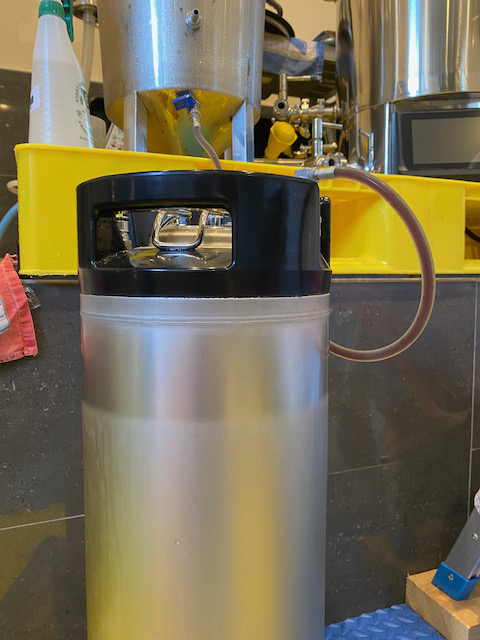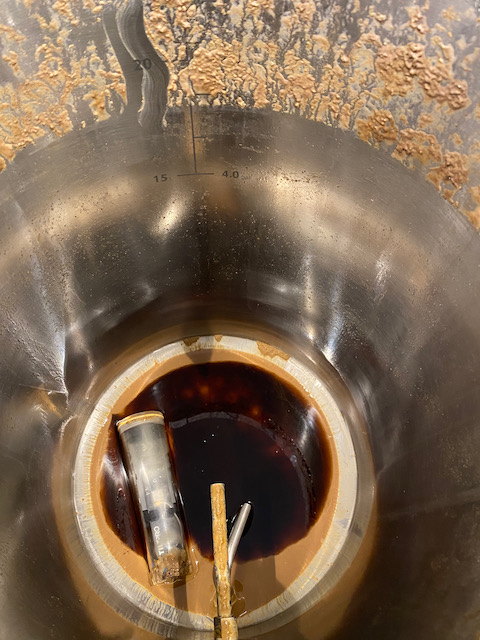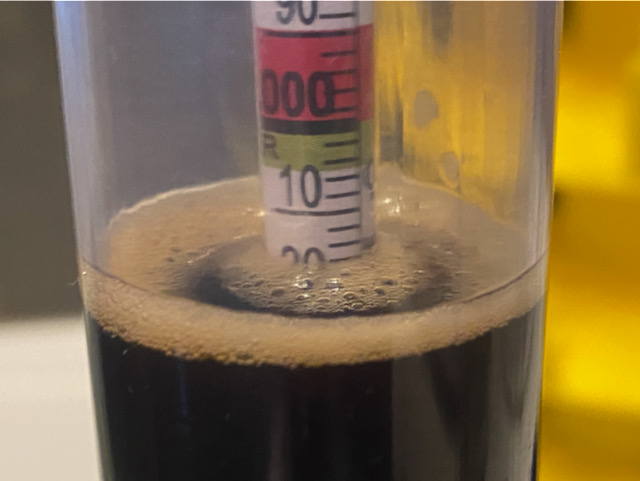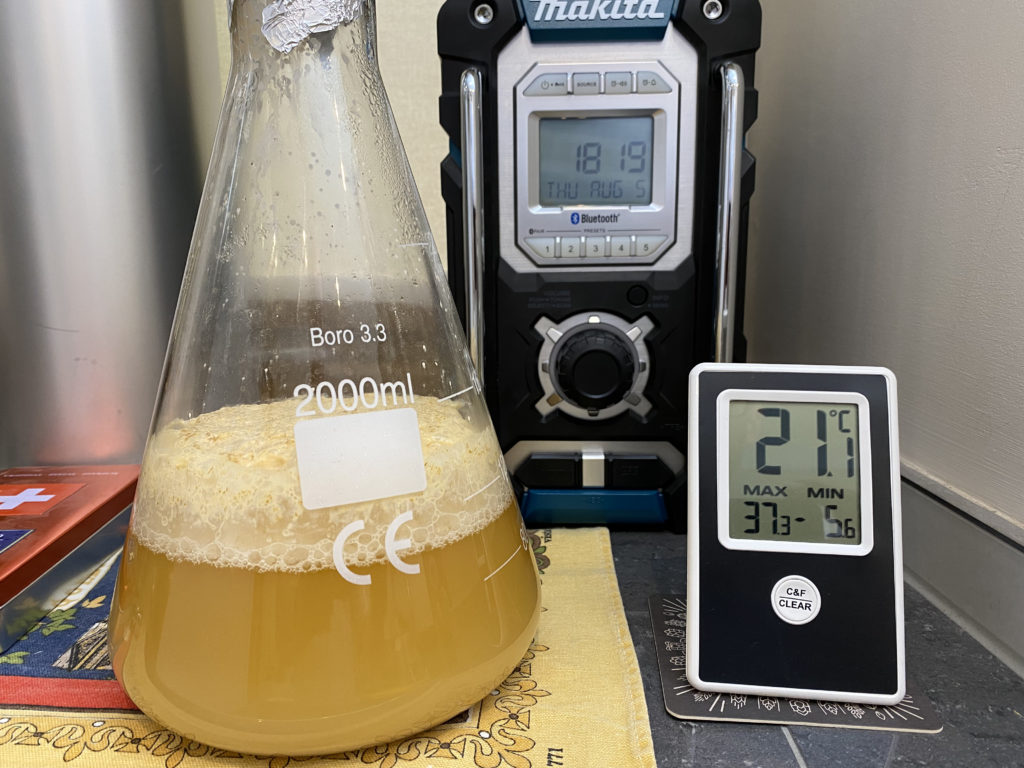Both of these kegs were finished just now in order to make room for incoming brews.
Yeti
| Ref | 2021-08 Yeti | Brewer | Pain & Patience |
|---|---|---|---|
| Style | Imperial Stout | Type | Beer, all-grain |
| Started | Fri 6th Aug 21 | Status | Archived, |
| Packaged | Mon 23rd Aug 21 | Fermenter | SS 25 litre bucket |
| Handle | 2021-08 Yeti |
|---|---|
| Brewer | Pain & Patience |
| Style | Imperial Stout |
| Type | Beer, all-grain |
| Fermenter | SS 25 litre bucket |
| Status | Archived, ABV |
| Started | Fri 6th Aug 21 |
| Packaged | Mon 23rd Aug 21 |
Cracked open the 19 litre Corny keg just now and served a glass of Yeti using the Stout Spout – very nice stouty pour with lots of velvety bubbles, but then it felt kind of flat. I think this is the reason I stopped using this spout last time I made Yeti. I’ll persevere with it and maybe get some second opinions.
Anyway, the taste is just fine and maybe a touch more earthy than the last time I brewed this. Nice notes of roast coffee and a very fine hint of chocolate or malt.
Having cold-crashed for a couple of days it’s time to put this one away and free up the fermentation fridge for my next effort. Not much to report really, I just let gravity do the work and trickled the brew from the SS Brewtech Bucket to a 19 litre Cornelius keg, airlock removed in the former and PRV prepped open in the latter.
On a positive note it seems I had about 17.5 litres in the fermenter and there was only about 1 litre of gunk settled in the bottom, which is where it stayed. On a negative note I measured the FG at 1.016, and that’s being optimistic, so looking at about 7.4% ABV this time around.
Not the greatest of brew days. Everything was going well until it was time to start the transfer to my SS Brewtech Bucket, when the flow became a dribble after barely a cup of wort had gone across. I decided that the inline Bouncer filter was to blame, or rather my use of too fine a mesh, when I noticed that I’d fitted the filter the wrong way around – not that this should actually matter in terms of flow.
Regardless, I swapped out the mesh for a larger one and corrected the filter’s orientation, but there was still nothing coming out so I decided to remove the filter altogether and risk the odd bit of trub in my FV. When still nothing came out I switched the lower left-hand valve to recirculate, and still nothing. Looks like the pump was jammed. With no means of pumping my wort to the bucket via the chiller it was either a case of using the racking cane and muslin filter, or I could just remove the centre pipe and set the right-hand valve to ‘drain all’.
It had been a long day so I went for the latter option, knowing that I’d get a tremendous amount of trub as a result but at least there would be practically no wasted wort, even if I’d have to spend additional time chilling. In hindsight I should have swapped the bucket for the Fermzilla at this point, since I could have used the collection jar to remove some trub once it had settled, but that’s hindsight for you.
I transferred to FV and got about 21 litres against my planned 15, so I don’t mind if I need to leave 2 or 3 litres behind. Good job I can rotate the dip tube on this vessel. The bucket went into the ferment fridge dialled to 22℃, which was the temperature of my patiently waiting yeast starter. Took a couple of hours to get there, then I pitched my yeast and dialled in 19℃ for optimum fermentation. Strong stream of bubbles by next morning tells me the yeast at least is happy – let’s just hope there are no off flavours from all that trub.
#wisdom
- don’t bother with a filter when transferring to FV
- don’t risk stopping the pump on high gravity, sticky brews
- if expecting lots of trub, use the Fermzilla
Brew Day Notes
08:20 – Started dough-in, water level at 25 litres with chiller and link pipe filled.
08:35 – Dough-in finished, heaters to 65℃ for mash rest. Needed quite a bit of tamping to get everything wet.
08:59 – Starting mash. Internal levels measured at 30 litres. Wort is light at first but quickly begins to darken.
09:09 – First stir, check for dough balls. All good. Definitely seeing less material making its way through the new screen than before, but flow also appears restricted and stirring doesn’t drop the level in the malt pipe as much as with the old mesh. Sucking air pretty soon, need to cut back on the centre pipe flow.
09:39 – Second stir, and this time I’m seeing the levels in the malt pipe drop nicely as the mash is agitated. Cut flow to centre pipe for a minute or two and we have balance, so I check the levels: 29.5 litres on the internal scale. On resuming flow I’m able to use the centre pipe more without the levels dropping, which should help to get better mash efficiency. 15 minutes to run.
09:59 – Mashing complete, heating to 75℃ for mash-out. One objective here is to make the viscosity of the mash thinner by raising the temperature so that sparging is easier, but we’re not sparging on this recipe. Still, it may allow the mash to drain better which will help minimise losses.
10:04 – Switching to manual heater control mode since mash mode can’t shift the temperature above 72℃. Need to be careful here to avoid 77℃ and with it off-flavours from tannins. Heaters at 65% for now.
10:06 – Starting mash-out at 75℃, heaters back to mash mode to see if they’ll hold it.
10:16 – Mashing complete. Quick check of levels and pre-boil gravity: 29.5 litres and 1.069 (1.049 @ 67.4℃) against Brewfather’s predicted 1.077. Seven points short isn’t great.
10:22 – Raising malt pipe for drain, heaters to 100% for boil. Boil volume is 19.75 litres against Brewfather’s 20.5 which means I’m short on volume and gravity. Balls.
10:49 – Boil tracker started, 60 minute additions in.
11:18 – 30 minute additions are in.
11:33 – 15 minute additions in, quick stir to release high tide hops, cut in chiller to sanitise. It’s already filled so won’t impact levels, which I’ll measure at the end.
11:50 – 5 minute additions are in. Plumbed in the transfer filter while circulating through chiller.
11:54 – End of boil, start chilling. Temperature 99.3℃ in tank. The yeast starter is at 22℃ so that’s roughly what I’m aiming for in my chiller return temperature before I start transfer.
12:10 – Return temperature is down to 25℃ so I’m starting transfer now. Quick check on the levels shows an optimistic post-boil volume of 17 litres / 36.6℃ (tank temp) against Brewfather’s 18.13. Probably about 1.5 litres short.
12:30 – Nightmare. Pump seems to have seized, possibly as a result of the transfer filter clogging, being in the wrong way round, then the larger grade replacement mesh clogged too. In the end I had to remove the filter, centre pipe and transfer using gravity, getting a load of crud into the FV as a result. Still, looks as though there’s no trub / chiller loss with a fermenter volume of 21 litres versus Brewfather’s predicted 15 litres. Post-boil gravity 1.072 (1.070 / 27.3℃) against predicted 1.088 – double balls. Be lucky to scrape 8% ABV at this stage. Not pitching yeast into FV at 29.5℃ so off to the ferment fridge until you calm down, with a quick blast of oxygen on the way so that at least I can clean everything.
13:50 – Cleanup finished. FV temp 27.8℃.
18:00 – FV has been at 22℃ for an hour or two, time to pitch the yeast starter and throw in a Tilt.
With the Erlenmeyer flask sitting on its stir plate and the starter well and truly underway I’m re-reading my notes from the last Yeti’s starter, which was coincidentally the first one I ever made. Since then I’ve done maybe half a dozen of these and am a lot more comfortable with the procedure, so much so that this time around I didn’t take any pictures or gravity readings, planning simply to rely on visual cues to confirm it’s ready to go in 2 days’ time. The only thing different this time around is the addition of Lipohop, an anti-foaming agent made using natural ingredients, and given that I didn’t have to clean the stovetop or nanny over the flask I think it’s safe to say I’ll be using it again.
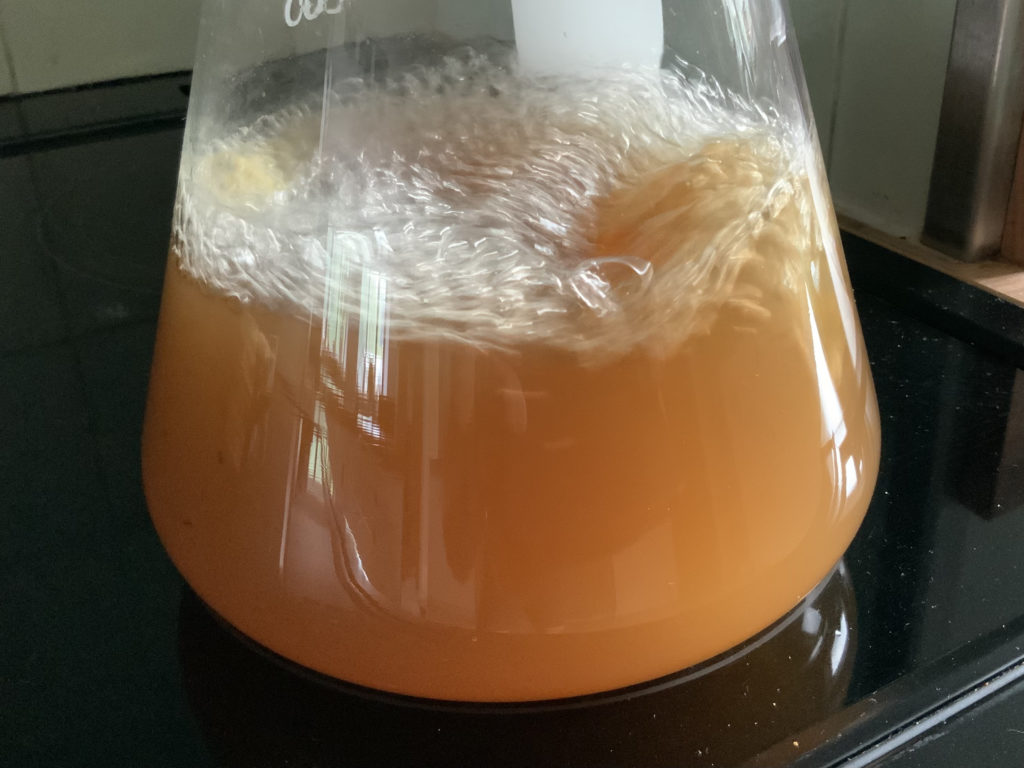
Brew Notes
- 123g DME
- 1 litre water
- 1/6 TSP (approx) Lipohop
Lipohop is an anti-foaming agent, approximate dose should be between 0.02 and 0.05 grams per litre. I think 1 TSP is normally around 2 grams, so complete guess is to aim for about a sixth of one small TSP. The small tar-like blob easily slid off the teaspoon, which had been sitting in boiling water for a few minutes to sterilise.
The Erlenmeyer flask was prepared by boiling some water in it to sterilise, then dumping that out in order to rapidly dry the interior, before being placed on scales for addition of DME using PET bottle-derived funnel. Water added to just above the 1 litre mark (guess anyway since there are only 800 and 1200 ml marks) then placed on boil and Lipohop added as well as the stirrer magnet, which I’d also sterilised with hot water along with the spoon.
Lipohop appears to be very effective indeed at suppressing foam during boil, and any bubbles which are produced (mainly from the stirrer magnet) immediately disappear on the surface. There are some small black particles visible in the boiling wort, presumably solid hop matter which won’t dissolve. Boiling the whole lot for 20 minutes should at least guarantee it’s sterile. Colour also seems a little darker than my usual starter, at least while it’s still boiling. Maybe I could get away with a smaller dose of Lipohop next time?
1 packet of M44 yeast pitched at 22℃, placed on stir plate 11:00, Wed 4 Aug.

